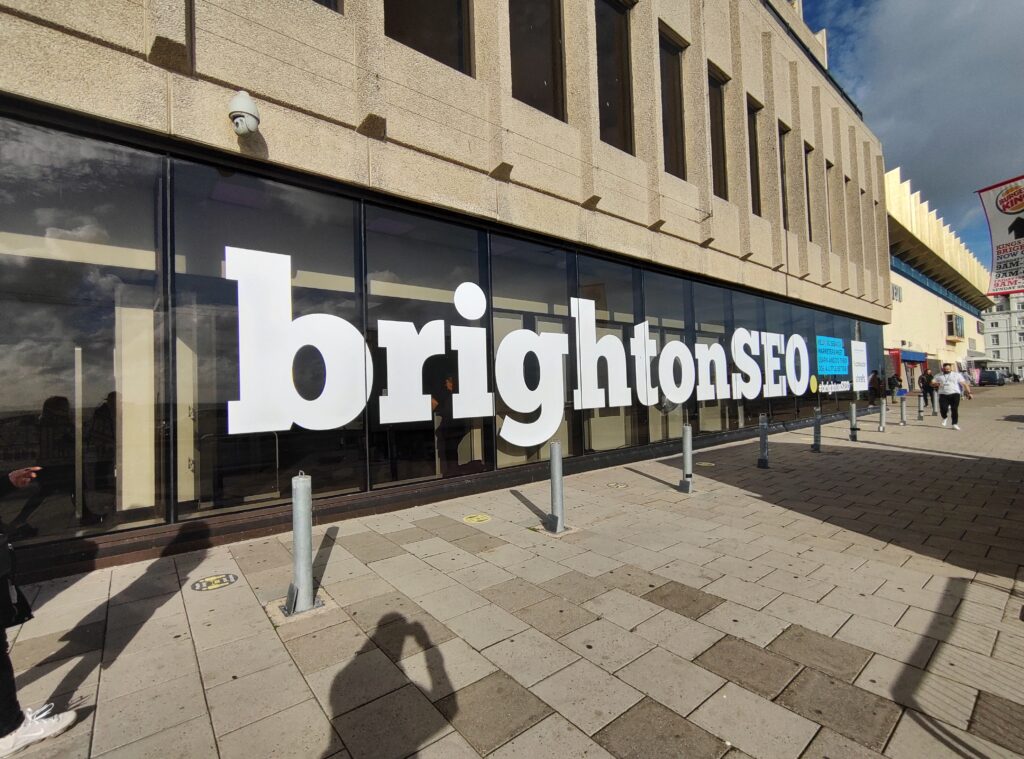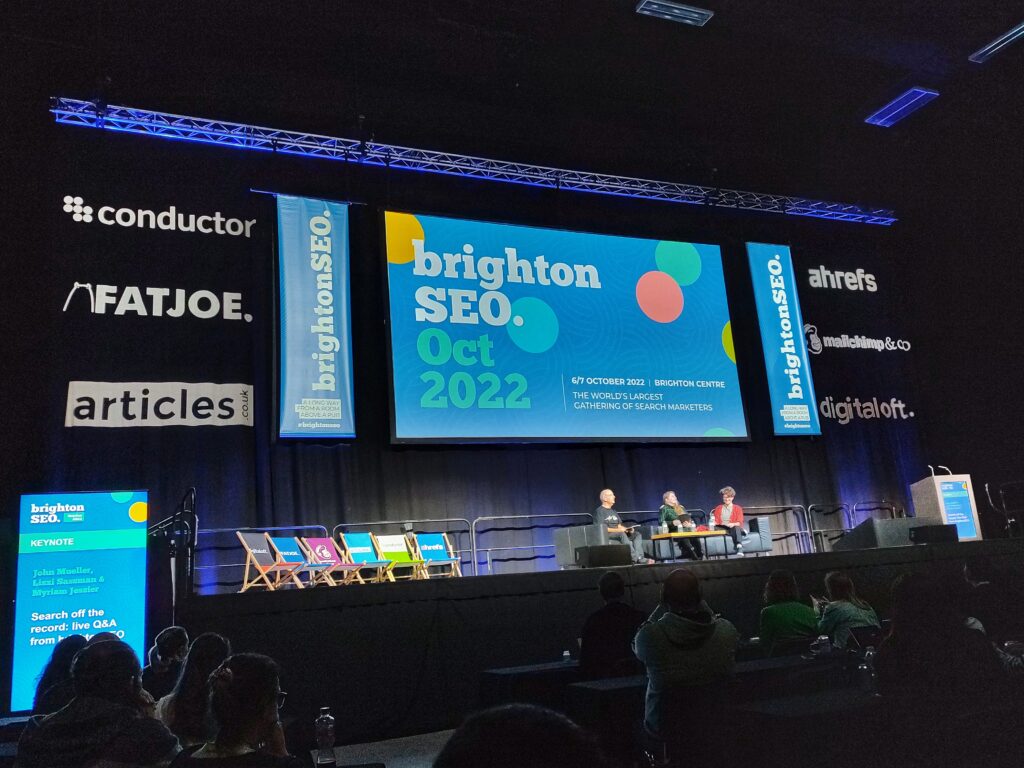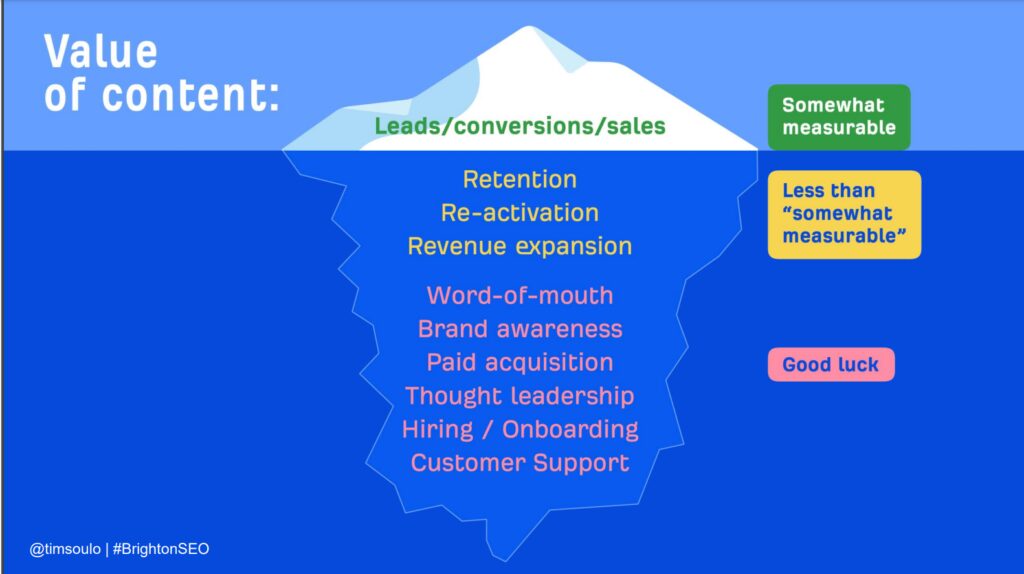October 2022 brought around the second BrightonSEO conference of the year. This is a huge event in the SEO industry, and we saw it as the perfect opportunity for Steve, our SEO Specialist, to experience the talks, booths, training, and networking with other like-minded SEOs.
With a packed-out agenda across the week full of amazing talks, and 1-2-1 in-depth training, there’s way too much to talk about in just one blog post, but here are some of the key takeaways and some examples of how they’re going to help our customers.

What is the BrightonSEO conference?
BrightonSEO is the biggest SEO conference in Europe, with 8000 attendees across the three days. It brings together people from across the world, in person and digitally, to listen to talks from industry leaders in content, search, technical, and more.
Held at the Brighton Centre, it’s at the beating heart of Brighton – known for its fantastic creative industry and passion for art and culture.
What were our favourite talks?


Anna Gregory-Hall – How to get more traffic with less content
Anna shared her tips on how less can mean more when it comes to content on your website. She talked about not getting sentimental with existing content on your site and gave some great actionable tactics on how to run an audit and produce a ‘keep, redirect, cull’ list.
To keep up with Google’s helpful content updates, it’s important to remember that your content has to serve a purpose and must benefit your audience.
“Removing unhelpful content could help the rankings of your other content.” Google Search Central
Tim Soulou – The Elusive ROI of Content Marketing
In his talk, the CMO at Ahrefs, Tim Suolo, explored the meaning of ROI and whether or not it’s actually possible to measure this for the success of your content marketing.
Tim explained that whilst there are factors that are somewhat measurable such as leads, conversions, and sales, there are so many other aspects to be aware of and that “content cannot not bring value if it talks about your product and gets impressions”.


Martin Splitt – a guided tour of JavaScript for SEOs
A really insightful talk by Google’s Martin Splitt, talking about what exactly happens when a page gets rendered, how JavaScript can impact that render, and how that affects us as SEOs.
Some of the key takeaways from this talk were not only a better understanding of how Google renders our pages, but also how to better use some of their tools to find potential errors or areas for improvement.
How this new knowledge will impact our clients
The training sessions and talks have provided some invaluable knowledge and actionable tactics that we’ve already started putting into our day-to-day activities.
From content optimisation to becoming a certified Google Sheets Wizard, not only can we make sure that our customers will continue to get good results, but we can also speed up some of our repeating tasks so we can spend more time on what really matters.
SEO is only becoming more important for those looking to grow their business online and capture the traffic that’s hunting for their services.
If you’d like to learn more about how you can level up your online presence with SEO, then get in touch with us today, we’d love to hear from you.










